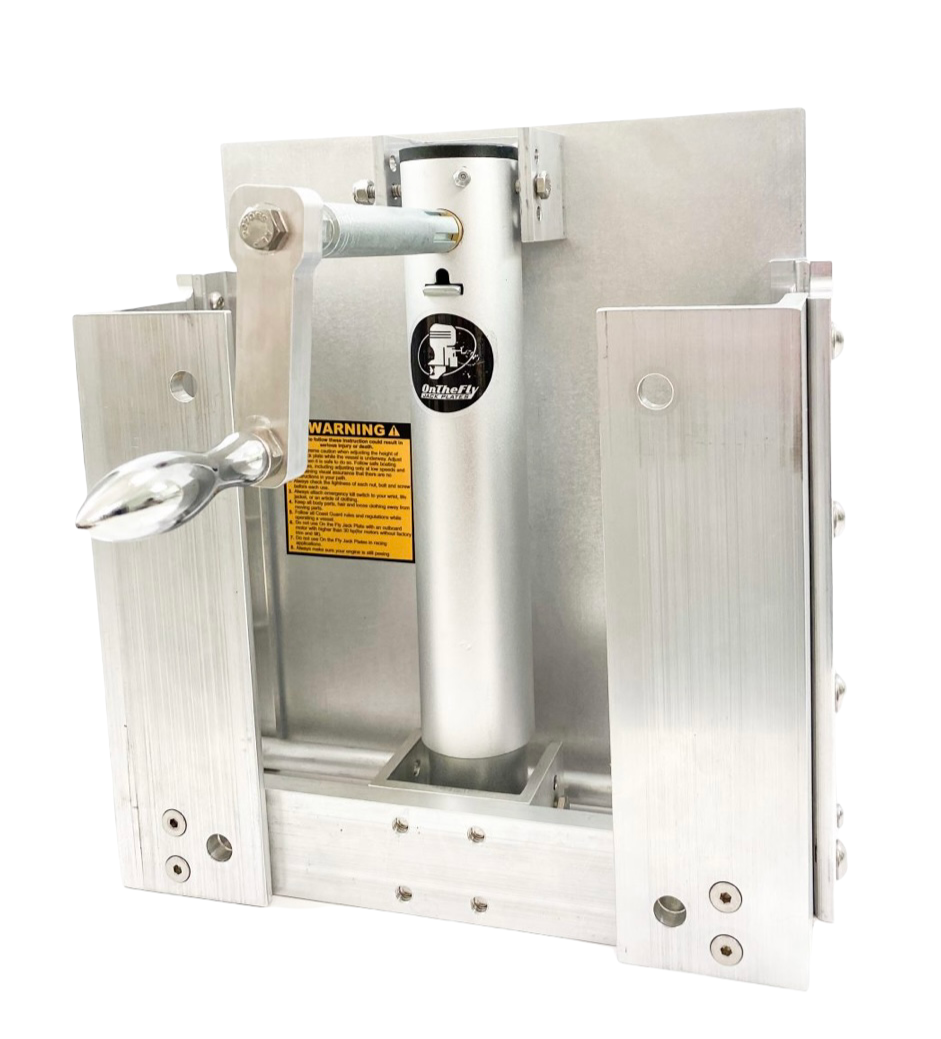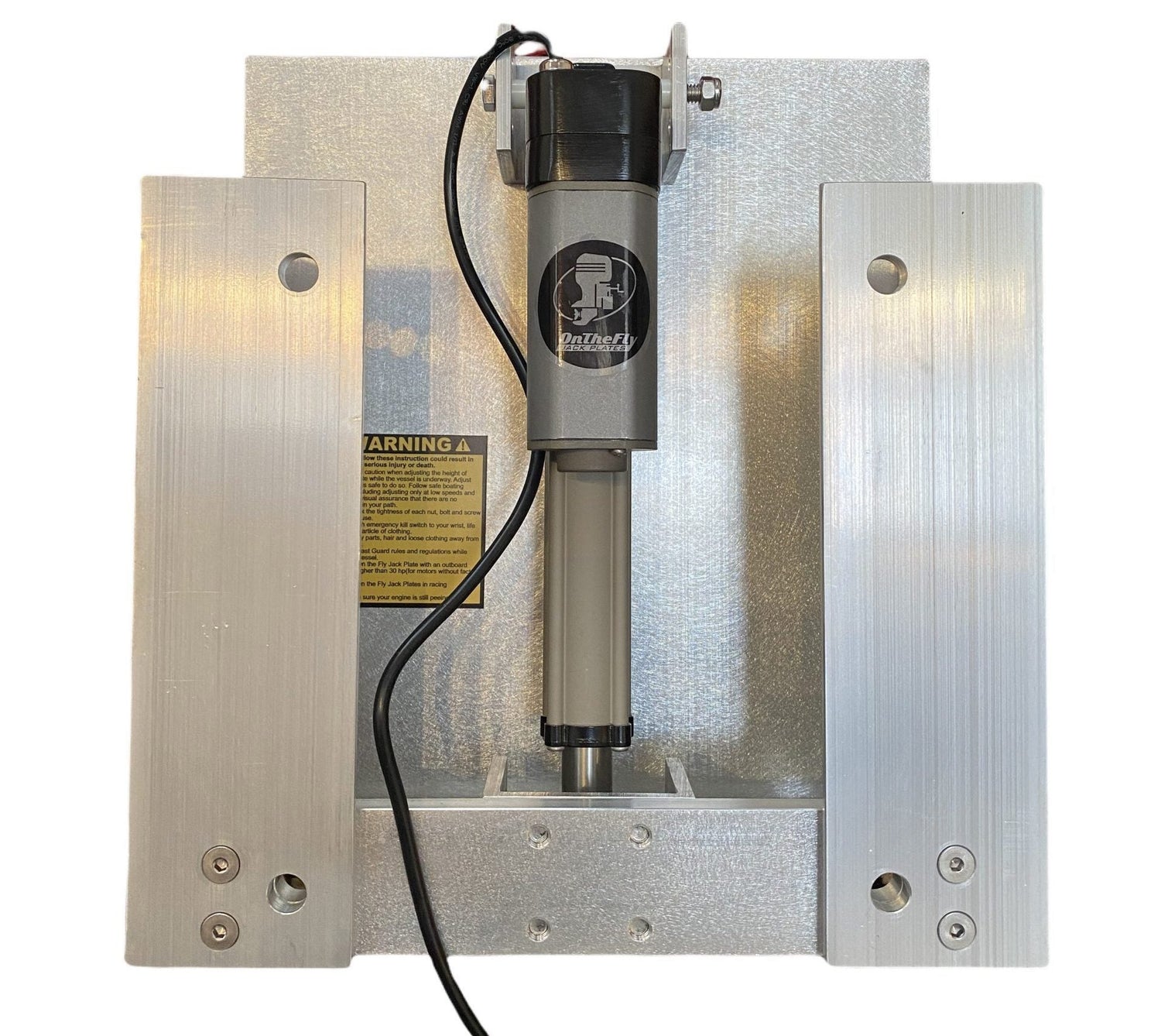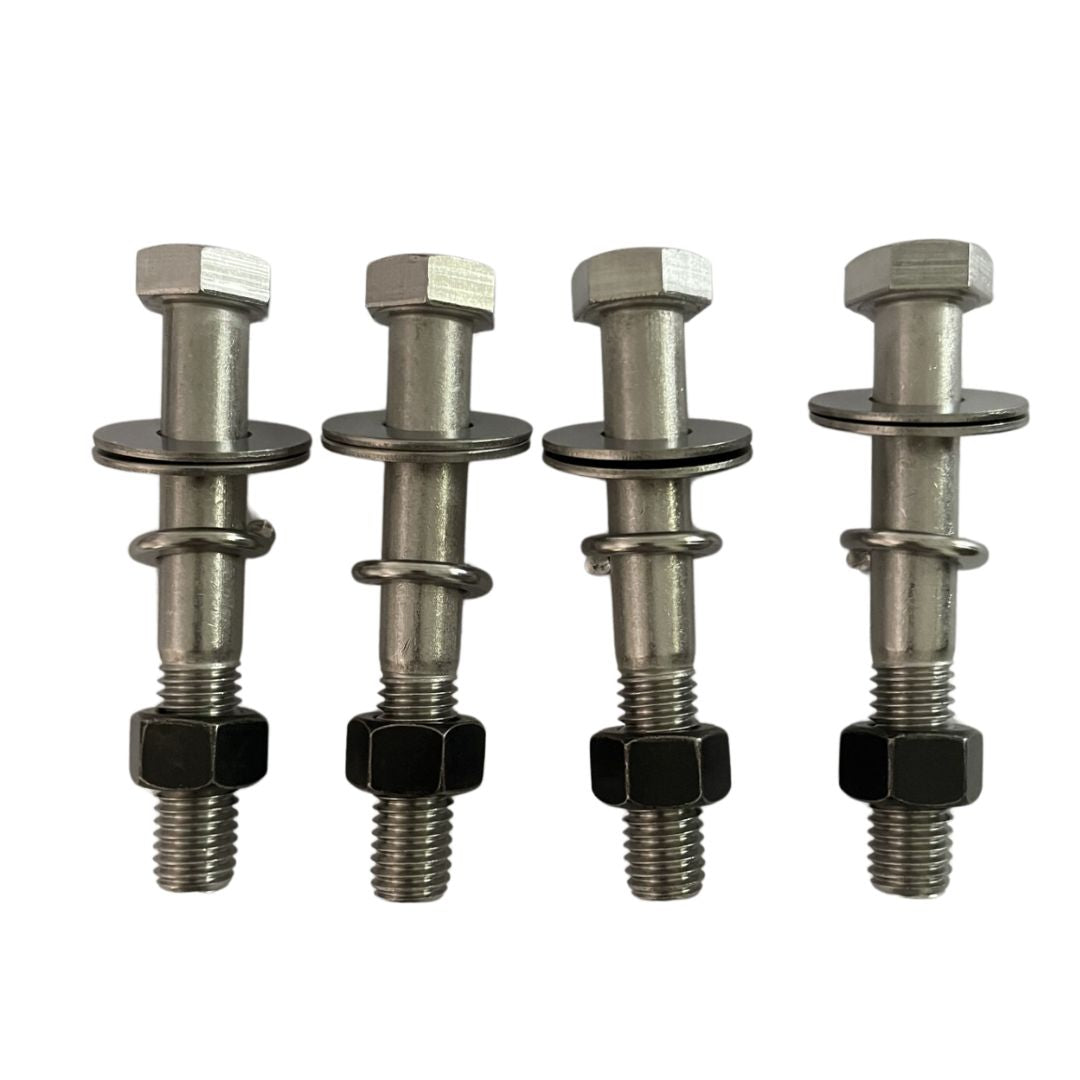
Jack Plate Maintenance Tips
Share
For boat owners, keeping all your equipment in top condition is essential, especially when you spend a lot of time in the water. One such critical piece of equipment that requires regular care is the jack plate. A jack plate allows you to raise and lower your outboard motor, providing more control over your boat's performance, especially in shallow waters. However, frequent exposure to saltwater can lead to wear and tear, so it’s important to maintain your jack plate properly.
These are our top maintenance tips to ensure your On The Fly Jack Plate stays in excellent condition.
1. Rinse with Soap and Water After Every Use
If you’re using your boat in saltwater, the first and most crucial step in maintaining your jack plate is to rinse it thoroughly after every use. Saltwater is highly corrosive and can cause significant damage over time if left untreated. To avoid this, wash your jack plate with fresh water and a mild soap solution after every trip. Pay special attention to the moving parts, inside jack gears, handle and the areas where salt can build up.
Why it works: Rinsing off salt prevents corrosion and buildup, which can impede the function of the jack plate and lead to early wear.
2. Dry Thoroughly and Apply Lubricant (this step is recommended for manual jack plates)
Once you've rinsed and dried your jack plate, it’s time for lubrication. The most effective way to ensure smooth operation and protect against rust is to spray the exterior with a protective lubricant like T-9 Boeshield or WD-40. These products offer long-lasting protection and help maintain the moving parts.
Make sure to apply the lubricant to the outside of the jack plate, focusing on areas that are exposed to the elements, including the stub shaft handle that protrudes from the jack plate.
Tip: Spraying lubricant on the handle prevents the jack plate from becoming stiff, ensuring smooth movement the next time you use it.
3. Lubricate the Worm Screw with WD-40 Gel Lube (this step is recommended for manual jack plates)
The next step involves focusing on the worm screw that operates the jack plate's vertical movement. This part is critical for smooth adjustments, and it can easily be neglected. To ensure the screw continues working smoothly, apply WD-40 Gel Lube up inside the jack through the bottom opening.
To do this correctly, ensure the jack plate is fully lowered so that the worm screw is exposed as much as possible. With the jack lowered, perform a circular motion with the lube from the top to bottom of the screw. This helps ensure the lubricant is evenly distributed along the screw's length and minimizes friction when the plate moves.
Why it works: This step keeps the worm screw well-lubricated, reducing wear and ensuring it operates smoothly without obstruction.
4. Tips for Proper Greasing (this step is recommended for manual jack plates)
Regular greasing is important, but over-greasing can actually cause problems. Too much grease can trap sand, dirt, or grit inside the gears, leading to unwanted grinding and wear.
For best performance, we recommend 2–4 pumps of grease every four months.
- Use more if you frequently run in saltwater or muddy areas.
- Use less if your jack plate stays clean, dry, and lightly used.
Why These Steps Matter
Following these steps not only keeps your jack plate in top condition but also contributes to its longevity. Corrosion, wear and tear, and friction are the biggest enemies of mechanical equipment, and a jack plate is no exception. Regular maintenance reduces the chances of these issues and ensures that your outboard motor operates at its optimal performance level when you need it most.
Remember, a little extra care goes a long way. Regular maintenance may take a few extra minutes, but the payoff is a smooth-running, long-lasting jack plate that will keep your boating adventures worry-free.



